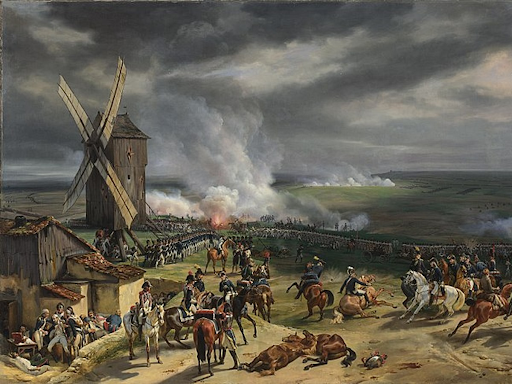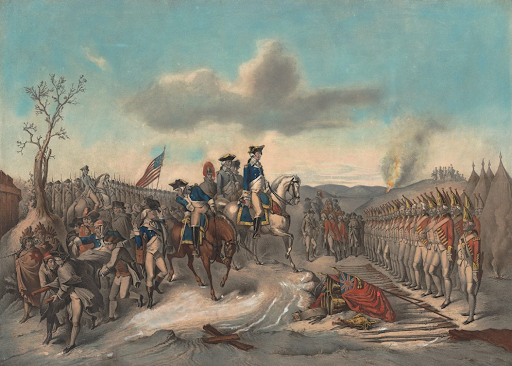
The French Revolution, which spanned from 1789 to the late 1790s, marked a climactic turning point in world history. During this evolutionary period, the residents of France started a profound change in their political landscape, stripping long-standing establishments like the monarchy and the feudal system. This universal unrest was primarily driven by dissatisfaction with the French nobility and King Louis XVI’s economic policies, ending in the execution of both the King and his wife, Marie Antoinette, by guillotine. Despite its descent into a fierce phase known as the Reign of Terror, the French Revolution eventually played a vital role in forming modern democracies by indicating the inherent power of the people’s will.
A Closer Look at the French Revolution’s Causes
The primary incentive for the Reign of Terror originated from France’s perceived disunity, exacerbated by acute political instability, and combined with both internal crises and external threats. This uncertainty appeared through religious and popular revolts, along with profound conflicts about handling these external threats.
During the end of the 18th century, France found itself in a threatening financial situation due to its expensive engagement in the American Revolution, as well as King Louis XVI’s luxury expenses. This risky state of affairs not only consumed the royal treasury but was aggravated by several years of poor yields, drought, cattle disease, and soaring bread prices, which sowed discontent among both peasants and urban poor. Disappointed by an administration that charged heavy taxes without giving relief, many resorted to unrest, robbery, and striking to voice their desperation and resentment.
In the autumn of 1786, Charles Alexandre de Calonne, the controller general under Louis XVI, delivered a financial reform plan that contained the introduction of a universal land tax, which would no longer excuse the aristocratic classes.
The Looming Threat of Foreign Invasion

An intense rejection of religious institutions depicted the French Revolution. The conflict between those supporting atheism and those adhering to Catholic Christianity directed to influential religious disruption throughout France. This religious dispute was another factor that provoked the use of terror as a means to retain order.
The primary contradiction of Catholicism became apparent with the distribution of the Civil Constitution of the Clergy on July 12, 1790. This establishment rearranged the Catholic Church, substantially converting priests into civil servants whose salaries were paid by the state and enforcing an electoral system.
On November 27, 1790, the National Assembly instructed that members of the clergy take an oath of loyalty to the French constitution and the reorganized church. Only about 50% of French clericals endorsed this oath, causing a division in the French church. Historian Noelle Plack stated this situation as a referendum on whether individuals’ primary allegiances were to Catholicism or the Revolution.
To keep order in the face of this religious turmoil, the National Convention operated various measures:
1. The implementation of the Law of Suspects in September 1793 led to the arrest of several dissenting priests.
2. On October 5, 1793, the Convention decided to eradicate all religious holidays and introduced a new secular calendar. The formation of the First French Republic in 1792 became Year I on this new calendar.
3. To substitute Catholicism, Maximilien Robespierre aimed to establish a form of dualism through the Craze of the Supreme Being. He considered that atheism would encourage chaos and that the population required a common faith. However, his plan failed, heightening divisions in the country and further stressing the perceived need for the use of terror.
Major Events of the Reign of Terror

The Committee’s authority extended as the threat of invasion by the First Alliance and internal conflict grew. The Committee considered that more rigid control over the French population would lead to greater unity.
In July 1793, after the removal of the Girondists from the National Convention, Maximilien Robespierre and Saint-Just, heads of the Jacobin Club, earned seats on the Committee, increasing its power further. The Committee employed its new executive powers to distress perceived counter-revolutionaries, including Federalists, Girondins, monarchists, and the clergy, strengthening its stance as the threat of counter-revolution persisted.
Robespierre’s fiery desire for a suitable Republic led him to execute a campaign against fellow Jacobins he considered counter-revolutionary or a threat to his leadership. In March 1794, Georges Danton, a major critic of the Committee, was suspended and later executed along with others, further aggravating divisions.
Robespierre’s decision to filter the Republic resulted in tyranny, with thousands arrested and the break of basic legal rights by the Law of 22 Prairial. This led to a surge in implementations, particularly during the “Great Terror” of June 1794, only finishing with the Thermidorian Reaction in July.
The wave began to turn for France militantly with the Battle of Fleurus in June 1794, diluting the argument for strict wartime measures. This turn in assets contributed to the Thermidorian Reaction, a legislative revolt against Robespierre, and the end of the Reign of Terror. Robespierre and his followers were arrested and then carried out, and a period of backlash known as the White Terror began as reduced targeted Jacobins and other radicals.
The Enduring Consequences of the Reign of Terror

The Reign of Terror had accidental consequences, as it led to the dictatorial implementation and a lack of accountability that planted a widespread sense of paranoia throughout France. These circumstances of fear and frustration with the Revolution inflamed the counter-revolutionary movement, supporting a return to the monarchy. Even Robespierre’s former supporters turned against him during the Thermidorian Reaction, a backfire that developed as he had earlier turned against his fellow Jacobins and Montagnards.
When Robespierre was arrested on 9 Thermidor, he was momentarily rendered speechless. At that moment, a fellow deputy exclaimed “The Danton chokes him!” Robespierre’s retort was to express that if the performance of Danton had greatly affected the members of the National Convention, they should have taken action to protect him.
The Reign of Terror, along with the subsequent White Terror, imposed lasting harm on the Jacobin Club’s influence. They never recovered the level of power they held between 1792 and 1794, and their membership considerably reduced following the executions of Robespierre and his supporters. On November 12, 1794, the National Convention cooperatively passed a decree to permanently cover the Jacobin Club.





